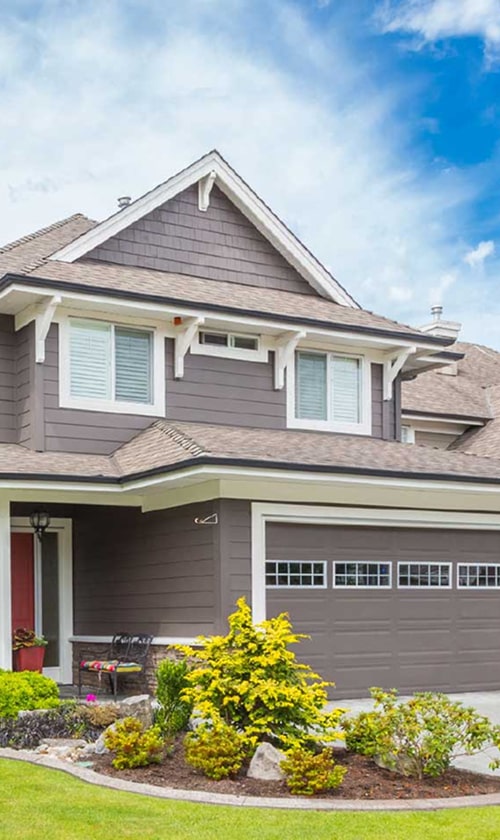Understanding Heat Pump Sizing and Its Importance

We must stress the significance of selecting the proper size heat pump to ensure efficiency and optimal performance in your home. An undersized or oversized unit can lead to increased energy costs and reduced comfort levels.
Basics of Heat Pump Sizing
When we talk about heat pump sizing, we’re referring to the unit’s capacity to produce heating and cooling for your home. It’s a delicate balance; a correctly sized heat pump will run efficiently, while an incorrectly sized one can cause a range of issues. To determine the size needed for your home, we consider the local climate, home construction, insulation levels, and the house’s total square footage.
The Role of BTUs and Tons in Sizing
Heat pump capacity is usually measured in British Thermal Units (BTUs) or tons. One ton is equivalent to 12,000 BTUs. These measurements help us understand the amount of heat a heat pump can remove or add to your home within an hour. To calculate the exact size, we perform detailed calculations that factor in your home’s heating and cooling requirements.
| Measurement | Equivalent |
|---|---|
| 1 Ton | 12,000 BTUs |
Importance of Accurate Heat Pump Sizing
Accurate heat pump sizing is essential for achieving maximum energy efficiency and ensuring the longevity of the system. An oversized unit can short-cycle, leading to unnecessary wear, while an undersized heat pump may struggle to maintain comfortable temperatures, running non-stop and driving up energy costs. Both scenarios can decrease the overall performance of the heat pump, reducing its effective lifespan. We make sure to avoid these issues by calculating the correct heat pump size tailored to your home’s specific needs.
Calculating Your Home’s Heating and Cooling Needs
To select the correct size heat pump for your home, it’s essential to calculate the specific heating and cooling needs of your space. We’ll guide you through assessing square footage, insulation quality, and local climate conditions to ensure efficiency and comfort.
Manual J Calculation Method
The Manual J calculation is the industry standard for determining the heat load and heat loss of a building. This comprehensive method factors in various elements such as square footage, local climate, and insulation. To begin, we collect data on the home’s layout, construction materials, orientation, and number of occupants. By using this method, we can calculate the precise heating and cooling requirements with accuracy, avoiding oversizing or under sizing the heat pump.
Assessing Your Home’s Layout and Insulation
The layout of your home and the quality of its insulation are critical in determining the heat load. In this step, we examine square footage and room configuration to identify areas where heat loss or gain could occur more readily. We also assess the insulation level in walls, ceilings, and floors. A well-insulated home retains heat more effectively, resulting in a lower heat load calculation and a potentially smaller heat pump requirement.
Considering Local Climate and Temperature
Local climate plays a significant role in the heating and cooling needs of your home. When calculating the heat load, we must consider the local temperature extremes, as areas with colder winters or hotter summers will have greater heating or cooling demands. By analyzing the historical climate data and recent temperature trends, we can anticipate the conditions your heat pump will need to withstand, ensuring it can maintain a consistent indoor temperature for maximum comfort.
Factors Influencing Heat Pump Efficiency and Performance

When selecting a heat pump for your home, we must consider several key factors that have a significant impact on the system’s efficiency and performance. Each component from ratings to features plays a crucial role in the heat pump’s effectiveness.
Understanding SEER and HSPF Ratings
Seasonal Energy Efficiency Ratio (SEER) and Heating Seasonal Performance Factor (HSPF) are metrics used to measure the efficiency of heat pumps. SEER indicates the cooling efficiency during the summer season, while HSPF is a measure of heating efficiency during the colder months.
- SEER Rating: The higher the SEER rating, the more energy-efficient the heat pump.
- HSPF Rating: A higher HSPF rating correlates with better heating energy efficiency.
Window Quality and Insulation Factors
High-quality windows and proper insulation greatly influence a heat pump’s ability to maintain a consistent temperature, thus impacting overall energy efficiency and performance.
- Windows: Double or triple-pane windows reduce air infiltration and improve insulation.
- Insulation: Properly insulated walls and roofs help maintain indoor temperatures, decreasing the heat pump’s workload.
Factors to evaluate:
- Heat loss through windows (energy loss)
- Quality of window sealing (air infiltration)
- Adequacy of insulation materials (energy-efficient temperature maintenance)
Heat Pump Features for Optimal Performance
Advanced features can enhance a heat pump’s capacity to offer optimal performance, directly affecting the system’s ability to heat or cool our home effectively.
- Variable-speed compressors: Adjust output to match demand, improving efficiency.
- Smart thermostats: Allow precise temperature control and operation scheduling.
Key Features for Efficiency:
- Two-Stage or Variable-Speed Motors:
- Adjust capacity to suit current heating or cooling needs.
- Less energy consumption compared to single-stage motors.
- Programmable Thermostats:
- Automate temperature settings for peak efficiency.
- Smart thermostats can adapt to our habits and preferences.
By focusing on these factors and understanding how they contribute to the heat pump’s efficiency and performance, we are better equipped to choose a heat pump that suits our specific needs and contributes to long-term energy savings.
Selecting the Right Type of Heat Pump

When choosing a heat pump, we need to decide between air-source and ground-source models as well as between mini-split and central systems, considering the specific pros and cons of each.
Air-Source vs. Ground-Source Heat Pumps
Air-source heat pumps are more common and utilize the outside air to heat or cool the home. They are easier to install than ground-source heat pumps and are often less expensive. However, their efficiency can be impacted by extreme temperatures.
| Factors to consider | Air-Source | Ground-Source |
|---|---|---|
| Efficiency | Lower in extreme temperatures | Consistent year-round |
| Installation Complexity | Easier, typically less invasive | More complex, may require extensive drilling |
| Initial Investment | More affordable | Higher due to drilling and setup complexity |
| Long-term Costs | Higher operational costs in extreme climates | Lower operational costs |
| Suitability | Varied climates, though less efficient in extreme cold or warmth | Regions with consistent soil temperatures |
Ground-source heat pumps, also known as geothermal, use the earth’s stable ground temperature to regulate home temperature. These systems are more expensive to install but can be more efficient and have lower operating costs in the long run.
Pros and Cons of Mini-Splits and Central Systems
Mini-split heat pumps are ductless systems ideal for heating and cooling specific rooms. Their installation is less disruptive and they offer flexible zoning capabilities. One clear advantage is they avoid the energy losses associated with ductwork of central systems.
| Mini-Split Advantages | Central System Advantages |
|---|---|
| No ductwork required | Uniformly conditions the whole home |
| Flexible installation options | Larger capacity for bigger structures |
| Individual zoning | Cost-effective for houses with existing ductwork |
| Energy-efficient |
In contrast, central heat pumps function as part of a central HVAC system and are beneficial for evenly distributing air throughout the entire home. They can be more cost-effective for homes with existing ductwork, although they may lead to energy loss due to heat exchange in the ducting.
| Mini-Split Disadvantages | Central System Disadvantages |
|---|---|
| Can be more expensive for whole-house heating and cooling | Potential for ductwork energy losses |
| Individual units required for each zone | More invasive installation if no ducts exist |
| May not integrate well with existing HVAC systems | Requires regular duct maintenance |
| Generally less efficient than mini-splits |
Each type of heat pump has its own set of factors to consider, and we must carefully evaluate the specifics of our home, climate, and comfort needs to make the best selection.
Cost Considerations and Maximizing Energy Savings
When we select the appropriate heat pump for our home, it’s important to evaluate both the initial investment and the long-term savings. Understanding these financial implications helps us make a cost-effective choice while also reducing our energy consumption.
Analyzing Heat Pump Costs and Savings Over Time
The initial cost of a heat pump system includes the purchase price and installation fees. These can vary widely depending on the size and type of system we choose. For example, ductless mini-split systems could range from $3,000 to $5,000, while geothermal heat pumps may cost between $10,000 to $20,000 installed.
To assess the true cost over time, we need to take into account the lifespan of the equipment, typically 15 to 20 years, and the ongoing energy savings. Heat pumps are known for their efficiency and can lead to considerable reductions in electric bills. Here’s an illustrative table of potential savings:
| Year | Energy Costs Without Heat Pump | Energy Costs With Heat Pump | Annual Savings |
|---|---|---|---|
| 1 | $2,000 | $1,200 | $800 |
| 5 | $10,000 | $6,000 | $4,000 |
| 10 | $20,000 | $12,000 | $8,000 |
| 15 | $30,000 | $18,000 | $12,000 |
| 20 | $40,000 | $24,000 | $16,000 |
The table demonstrates that even though the upfront costs are higher, the long-term energy cost savings can offset the initial investment.
Maintenance, Repairs, and Energy Consumption
Regular maintenance is crucial to ensure our heat pump operates efficiently. Neglecting maintenance can lead to increased energy consumption and costs. An annual service check can cost around $150 to $300, but this proactive step can prevent expensive repairs.
Repairs might be necessary if we notice a decrease in performance or increased energy bills. Minor repairs may only cost a few hundred dollars, while major issues might incur costs in the thousands.
Heat pump systems typically use less energy than conventional HVAC systems. For instance, a high-efficiency heat pump might use 4,000 kilowatt-hours (kWh) per year, compared to a traditional system’s 6,000 kWh, resulting in lower energy consumption and electric bills. Here’s a breakdown of potential energy consumption savings:
- 2,000 kWh/year saved
- Assuming an average cost of $0.13 per kWh
- Annual savings of $260
By staying on top of maintenance and repairs, we ensure that our energy consumption remains low, maximizing our energy savings over the lifespan of the heat pump. This approach keeps our electric bills in check and supports our decision to opt for a heat pump as a cost-effective and energy-saving solution for our home heating and cooling needs.




